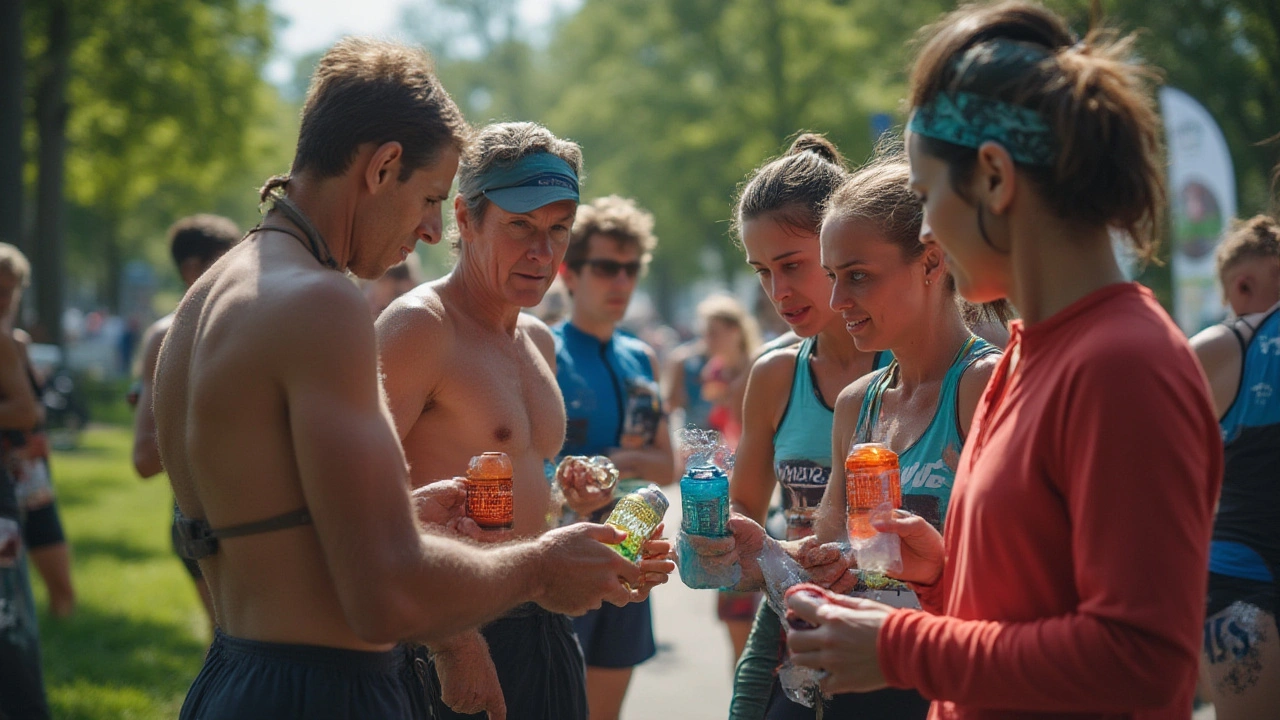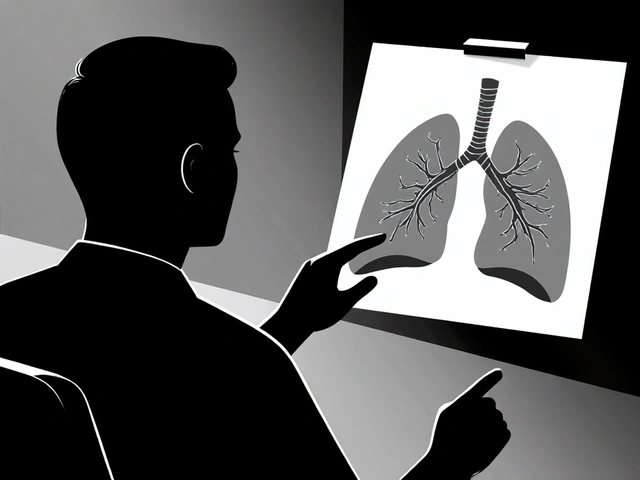You slog through a steamy marathon. Sweat pours, legs burn, and your mouth feels like the bottom of a parrot cage. You see a table with little salt packets or those familiar electrolyte tabs. You pop one, expecting salvation. But wait—does salt really keep you hydrated, or could you be sabotaging your race without even knowing it? The answers aren’t what most weekend warriors expect.
How Salt Works in the Body: The Basics Endurance Athletes Need to Know
We sweat. And when we sweat, we shed more than just water. Along for the ride are key electrolytes, fronted by sodium—the same stuff in all those salt tabs and drinks. Sodium does a ton more than just make fries delicious. It’s essential for fluid balance because it helps control your body’s water content. Your blood’s sodium levels signal everything from thirst to how much pee your kidneys make. If things get off-kilter, you can tip into dehydration or, just as scary, a diluted blood state called hyponatremia. Both mess up performance and health.
The average liter of sweat from an endurance athlete contains about 800-1200 mg of sodium, but rates vary wildly. Some of us are ‘salty sweaters’—the kind with chalky white streaks on their hats after a hot half marathon—while others sweat just half as salty. One size doesn’t fit all, and the rate changes with heat, genetics, and even how well-acclimated you are. Runners in the Badwater Ultramarathon (the one that crosses Death Valley at 120°F) can lose over 7 grams of sodium per day. That’s a ton. But it’s not just heat—the faster your pace, the more you sweat, and the more sodium you lose.
Sodium’s job is to help keep enough water in your blood vessels, so your heart doesn’t work overtime to push it around. When sodium drops too low because you replace the water but not the salt (think: guzzling only water for hours), your body says “thanks, but this isn’t working.” Cells swell with water, your brain can fog up, and muscles feel weak. That’s the dreaded hyponatremia—and it’s more common than you think at finishing lines of long races. Marathon medical tents often see it as much as dehydration. Yet drinking too much salty stuff can backfire, too. If you load up on sodium without adequate water, your body tries to get rid of the excess by making you thirsty and increasing urine output. That doesn’t always end well for performance, either.
So, is salt magic? Not quite. It’s critical, but tricky. You need enough to match losses—not more, not less. And, not all races have the same recipe. Understanding sodium isn’t just about avoiding cramps; it’s about keeping your system steady, your legs turning over, and your brain in the game.
Latest Research: Salt, Performance, and Fluid Retention in Long Races
The classic advice says: take salt to stay hydrated and avoid cramps. But what does science actually tell us? It’s not as simple as “more salt equals better performance.”
In a big 2023 study published in Medicine & Science in Sports & Exercise, ultra-marathoners who drank plain water and those who used sodium capsules showed no major difference in race finish times. Both groups did fine if they matched their fluid and sodium intake to their sweat losses. What got people in trouble—slowed times, disorientation, even medical withdrawals—was overdrinking plain water or going bonkers on salt tabs without feel for what they were losing out there.
Other research, including a review from the American College of Sports Medicine, points to a simple takeaway: salt helps most when you sweat a lot (hot weather, long events), and your fluid matches sodium losses. The real secret isn’t popping handfuls of salt tabs—but knowing your sweat rate, how salty your sweat is, and matching both water and sodium as best as you can. If you overshoot and load up on sodium before or during your race without drinking enough water, your body compensates by diluting sodium back down, mostly through urine. You pee it out, you get thirstier, and sometimes your gut rebels, leading to that classic mid-race stomach drama.
So, does more salt mean better water retention? Check this out: a well-designed clinical trial revealed that people given higher sodium drinks before exercise did retain more water for a few hours—but only if they were mildly dehydrated to begin with. If they started fully hydrated, the extra salt simply made them thirsty and increased urine output. If you want nitty-gritty, see what the pros say about does salt retain water. It covers the topic step by step, no fluff.
Lately, the focus is shifting away from universal salt loading and toward individualized plans. Pro athletes weigh themselves before and after training, track their salt intake, and sometimes use sweat patch testing to know exactly how much sodium they lose. This kind of geeky granularity isn’t practical for every runner, but knowing if you’re a salty sweater (white sweat marks, cramping in hot races, super salty taste on your skin) can at least help you rough-in your plan. If your muscles cramp in every half marathon but you finish looking like a salt shaker spilled over your shoulders, you might need a targeted sodium top-up.
But what about cramps? One giant study scotched the “salt prevents cramps” myth. Turns out, muscle cramps during endurance events are only loosely related to salt status. Neuromuscular fatigue—the same stuff that makes your stride turn to spaghetti after 2 hours—is often the real culprit. Still, not everyone’s convinced, and for a few athletes with heavy sweat, sodium seems to take the edge off cramps late in a race. But again, more isn’t always better.
Let’s visualize what’s at stake. Here’s a quick breakdown to show typical fluid and sodium losses:
| Activity | Duration | Avg. Sweating (L/hour) | Sodium Loss (mg/hour) |
|---|---|---|---|
| Marathon (mild conditions) | ~4 hours | 1.0 | 800 |
| Ironman Triathlon (hot/humid) | ~12 hours | 1.2-1.7 | 1200-1600 |
| 10K Race (cool) | ~1 hour | 0.5 | 400 |
What stands out? Longer events and hotter weather mean more sweat, and way more sodium lost. So, blindly copying an elite’s salt plan for your casual 10K may do more harm than good.

Practical Tips: Building Your Hydration and Electrolyte Gameplan
So, you want a bulletproof plan for your next race? There’s no single universal template, but there are practical ways to get much closer to getting sodium and water right. Here are some down-to-earth principles:
- Know your sweat rate: The night before your big race, weigh yourself (naked, before breakfast). After an hour run at race pace, towel off, and weigh again. Every pound lost equals roughly 16 ounces (473 ml) of sweat. That tells you how much you need to drink for each hour of racing.
- Estimate your salt loss: If you see heavy salt stains or get super salty skin, guess toward the higher end—about 1000-1200 mg of sodium per hour in tough conditions. Most sports drinks have 200-450 mg per 20 ounces (600 ml), so you may need to supplement with tabs or salty food.
- Don’t pre-load indiscriminately with salt: If you’re not already a salty sweater and/or going into a mild race, normal balanced meals probably give you enough sodium. Studies show athletes who push extra sodium before the race don’t retain it all as water; your kidneys just filter it out.
- Drink to thirst with intention: Recent research backs drinking to thirst—not guzzling at aid stations “just because.” Your brain is smart. Ignore old advice to drink beyond thirst unless you know you sweat buckets.
- Watch your gut: High-salt drinks can mess with your digestive system. If you develop stomach cramps or have to duck behind bushes during training, it might be too much sodium or fluid.
- Adjust for weather and effort: Up your sodium and water needs if it’s hotter, more humid, or a tougher, longer race than your usual training.
Pro tip: Many elite runners and triathletes eat salty foods (pickles, bouillon, or salty pretzels) after the race, not just during. Lost sodium is best replaced over several hours, not immediately in one hit. Sodium tablets are handy for races but can be harsh on the gut and, in excess, don’t give any performance bonus.
Salt and Water: Friends or Foes for Endurance Athletes?
If you’re looking for a single answer to whether salt will make or break your race, you won’t find one. The science is clear that sodium is essential, but only in amounts tailored to your sweat, eating habits, and race conditions. Too little, and you risk underperforming or, rarely, serious medical issues. Too much, and your guts—and kidneys—pay the price (sometimes at the expense of your finish time, and dignity).
The trend is clear: smart athletes use trial and error in training, not just race day. This means you should experiment on long runs: try a little more salt, then less, and see what feels best and cuts down on cramps or fatigue. Record your food and drink during long workouts, and if you’re a techie, note pre- and post-run weights and how thirsty you get.
For some extra perspective, the sodium issue isn’t limited to runners and triathletes. Even pro cyclists in the Tour de France carefully balance salt and water hour by hour across stages—often guided by team nutritionists with blood sodium meters and sweat patch kits at the ready. Yet, amateur athletes can get 90% of the way there by simply paying attention during key training sessions and keeping things simple. Don’t copy-paste someone else’s fancy plan.
Got a big race coming up? If you tend to feel bloated, crampy, or foggy after salty drinks, pull back. If you bonk early in the heat or finish with wild white streaks on your kit, gently bump up sodium. Always aim for the sweet spot where you’re hydrated, but not so loaded up that you’re running to the bushes more than the finish line. Endurance isn’t about hacks or quick fixes—it’s about knowing your body and giving it exactly what it asks for, no more and no less.




Steven Howell
July 23, 2025 AT 06:51As a sports physiologist with over two decades of fieldwork in endurance events, I’ve observed that sodium regulation is one of the most misunderstood variables in athletic performance. The notion that salt supplementation universally enhances hydration is a myth perpetuated by marketing departments, not peer-reviewed science. The human body is exquisitely adaptive-when sodium levels dip, aldosterone increases, and renal reabsorption kicks in. What matters is not how much salt you consume, but whether your intake aligns with your sweat sodium concentration, which varies by genetic predisposition, acclimatization, and even menstrual cycle phase in female athletes. I’ve seen athletes collapse from hyponatremia after drinking 10 liters of water and two salt tabs, while others finished strong on plain water and a banana. Individualization isn’t optional-it’s physiological necessity.
For those seeking measurable data, I recommend sweat patch testing. It’s inexpensive, non-invasive, and far more accurate than guessing based on salt stains. And please, stop pre-loading sodium before races. Your kidneys will excrete it within 90 minutes if you’re euhydrated. Save the electrolytes for during activity, and only if your sweat rate exceeds 1.2L/hour and your sweat is visibly salty.
Also, cramps are neuromuscular, not electrolytic. That’s settled science since the 2012 British Journal of Sports Medicine meta-analysis. Don’t blame sodium for fatigue. Blame pacing, lack of training specificity, or poor muscle conditioning. The body doesn’t cramp because it’s low on salt-it cramps because the motor neurons are exhausted. Fix the training, not the salt.
Finally, avoid commercial electrolyte tabs. They’re often loaded with artificial sweeteners and fillers that irritate the gut. Real food-pickles, miso soup, salted nuts-is more bioavailable and gentler on digestion. Your gut will thank you when you’re 50 miles into a race.
Bottom line: Know your sweat. Train with it. Don’t supplement blindly.
Brandy Johnson
July 24, 2025 AT 10:01This article is dangerously naive. America’s endurance athletes are being led astray by pseudo-scientific ‘listen to your body’ nonsense. We don’t need ‘personalized plans’-we need discipline, structure, and respect for proven physiological principles. The fact that you’re suggesting athletes rely on ‘salt stains’ or ‘taste on skin’ is embarrassing. This isn’t a yoga retreat, it’s competitive sport. In the military, we train in 120°F heat with fixed sodium protocols-no guessing, no ‘feelings.’ You lose 1,500 mg/hour? You consume 1,500 mg/hour. Period. No ‘maybe’ or ‘if you’re a salty sweater.’
And what’s this nonsense about ‘drinking to thirst’? That’s how people end up in ambulances. Thirst is a lagging indicator. By the time you’re thirsty, you’re already 2% dehydrated. That’s a 10% drop in performance. We don’t wait for thirst in combat-we hydrate on schedule. If you can’t follow a protocol, don’t compete. America needs athletes who follow rules, not ones who ‘experiment’ like lab rats.
Stop romanticizing individualism. Science doesn’t care about your ‘gut feeling.’ It cares about data. And the data says: consistent sodium intake during prolonged exertion improves time to exhaustion. Full stop.
Peter Axelberg
July 25, 2025 AT 17:23I’ve done five marathons and two 50Ks in the desert, and let me tell you-salt is weird. I used to chug electrolyte tabs like candy, thinking I was being smart. Ended up with bloating so bad I had to walk the last 8 miles. Then I switched to just drinking water and eating a handful of pretzels every hour. No more stomach drama. No more cramps. No more feeling like I swallowed a salt block.
Turns out, my sweat is basically seawater. I’ve got white rings on my shirts like I’m a human salt lick. But guess what? I don’t need fancy tabs. I don’t need a sweat test. I just eat salty food. Pickles before the race, salted peanuts at aid stations, a little broth after. My body knows what it wants. It’s not rocket science.
Also, the ‘drink to thirst’ thing? 100% true. I used to force myself to drink every 20 minutes like a robot. Ended up with nausea, headaches, and zero energy. Now I sip when I’m dry, eat when I’m hungry, and let my body lead. I finished my last 50K in 7:12, no supplements, no tabs, just water and snacks. No one else did it that way. But I didn’t collapse. I didn’t puke. I just kept going.
Maybe the real secret isn’t sodium. Maybe it’s just trusting yourself. We’ve been sold this idea that we need to engineer every drop of sweat, every gram of salt. But we’re not robots. We’re meat machines with instincts. Listen to them.
Also, if you’re doing a 10K and worrying about sodium? You’re overthinking it. Just go run. Your body’s been doing this for 300,000 years. It’s fine.
Monica Lindsey
July 27, 2025 AT 04:05Stop pretending this is science. It’s folk wisdom wrapped in a lab coat.
Sodium doesn’t prevent cramps. It never did.
Hyponatremia is rare. Overhydration is the real killer.
You don’t need a sweat test. You need common sense.
If you’re losing salt, you’ll taste it.
If you’re bloated, you drank too much.
If you’re cramping, you’re tired.
Stop overcomplicating the obvious.
jamie sigler
July 28, 2025 AT 15:44I read all this and just… sighed.
So now I’m supposed to weigh myself before and after runs, track sweat stains, buy sweat patches, eat pickles, avoid tabs, and figure out if I’m a ‘salty sweater’ or just a ‘lazy runner’?
What if I just… didn’t care?
I run because I like it. Not because I want to be a human electrolyte calculator.
And now I feel guilty for drinking water and eating a banana after a 10K?
Can we just… let people enjoy running without turning it into a biohacking nightmare?
I’m tired.